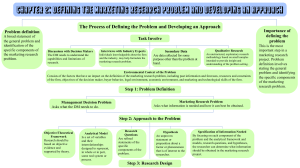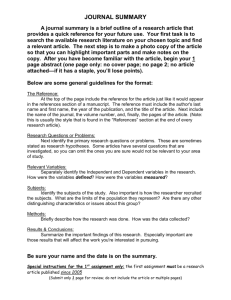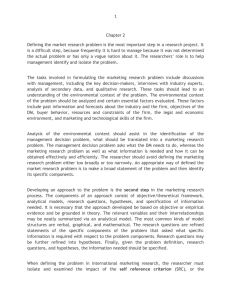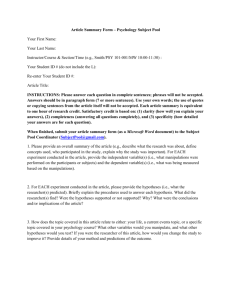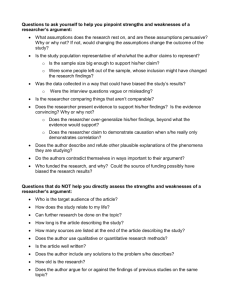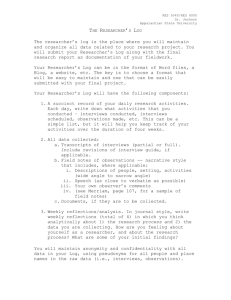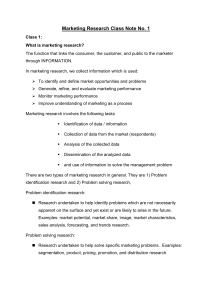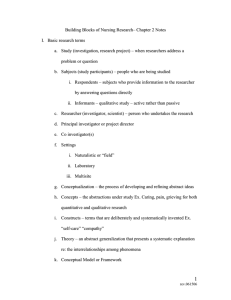Business Research Problem Exam Questions
advertisement
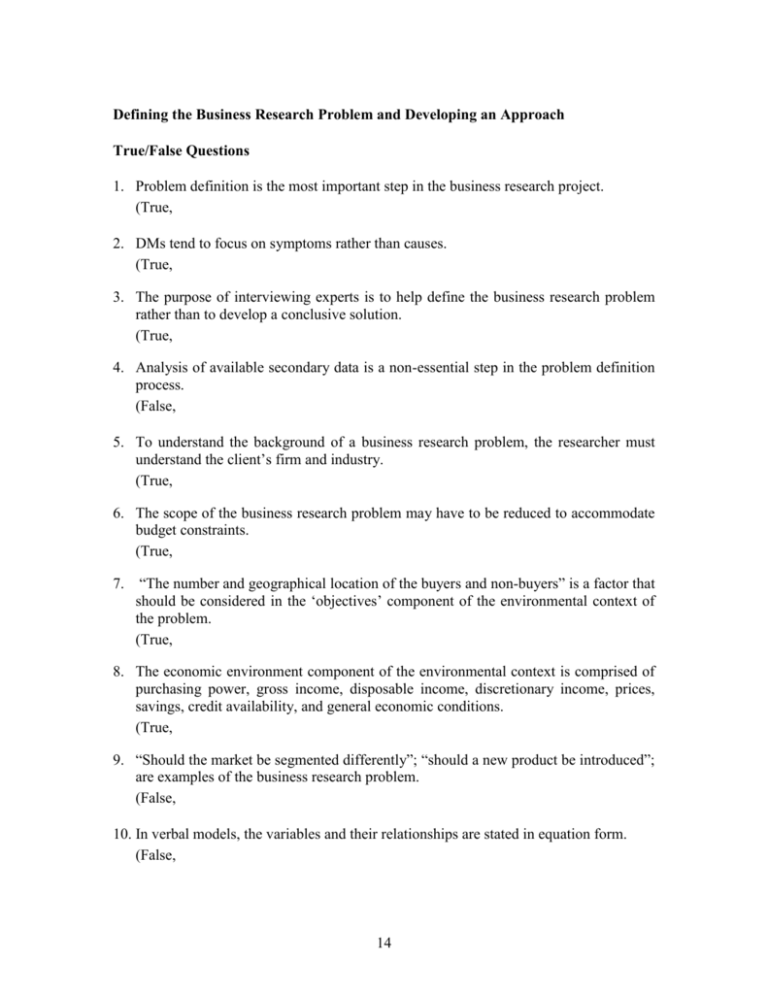
Defining the Business Research Problem and Developing an Approach True/False Questions 1. Problem definition is the most important step in the business research project. (True, 2. DMs tend to focus on symptoms rather than causes. (True, 3. The purpose of interviewing experts is to help define the business research problem rather than to develop a conclusive solution. (True, 4. Analysis of available secondary data is a non-essential step in the problem definition process. (False, 5. To understand the background of a business research problem, the researcher must understand the client’s firm and industry. (True, 6. The scope of the business research problem may have to be reduced to accommodate budget constraints. (True, 7. “The number and geographical location of the buyers and non-buyers” is a factor that should be considered in the ‘objectives’ component of the environmental context of the problem. (True, 8. The economic environment component of the environmental context is comprised of purchasing power, gross income, disposable income, discretionary income, prices, savings, credit availability, and general economic conditions. (True, 9. “Should the market be segmented differently”; “should a new product be introduced”; are examples of the business research problem. (False, 10. In verbal models, the variables and their relationships are stated in equation form. (False, 14 11. Graphical models are analytical models that provide a visual picture of the relationships between variables. (True, 12. Hypotheses go beyond research questions because they are statements of relationships or propositions rather than merely questions to which answers are sought. (True, 13. SPSS can be used to perform forecasts and what-if analyses to help the researcher in isolating the underlying causes, identifying the relevant variables that should be investigated, and formulating appropriate research questions and hypotheses. (True, Multiple Choice Questions 32. The need for the researcher to understand the nature of what decision managers face and what they hope to learn from research is one of the reasons to conduct _____. a. discussions with decision makers b. interview with experts c. secondary data analysis d. qualitative research (a, 37. The _____ provides a useful framework for interacting with the DM and identifying the underlying causes of the problem. a. problem audit b. management problem c. problem definition d. none of the above (a, 38. It is important to perform a problem audit because _____. a. DMs tend to focus on symptoms rather than on causes b. the DM knows the cause of the problem c. the DM, in most cases, has only a vague idea of what the problem is d. both a and c are correct (d, 39. As one of the seven Cs that characterize the interaction between the DM and the researcher, confidence is best defined as: _____. a. there should not be any hidden agendas, and an attitude of openness should prevail 15 b. the interaction between the DM and the researcher should be guided by mutual trust c. business research is a team project in which both parties (DM and researcher) must cooperate d. the interaction between the DM and the researcher should be creative rather than formulaic (b, 40. Because of potential difficulties when seeking advice from experts, it is best to use interviews with experts when conducting business research _____. a. for industrial firms b. for products of a technical nature c. in situations where little information is available from other sources d. all of the above (d, 41. _____ is an unstructured, exploratory research methodology based on small samples intended to provide insight and understanding of the problem setting. a. Primary research b. Qualitative research c. Secondary research d. Quantitative research (b, 42. _____ consists of the factors that have an impact on the definition of the business research problem, including past information and forecasts, resources and constraints of the firm, objectives of the decision maker, buyer behavior, legal environment, economic environment, and business and technological skills of the firm. a. The approach to the problem b. Research design c. The environmental context of the problem d. Problem definition (c, 43. To formulate a business research problem of appropriate scope, it is necessary to take into account both the resources available, such as money and research skills, and the constraints on the organization, such as cost and time. These considerations refer to which of the factors related to the environmental context of the problem? a. resources and constraints b. buyer behavior c. legal environment d. economic environment (a, 16 44. The _____ consists of income, prices, savings, credit, and general economic conditions. a. legal environment b. economic environment c. objectives d. buyer behavior (b, 45. _____ is a problem that entails determining what information is needed and how it can be obtained in the most feasible way. a. The environmental context of the problem b. The management decision problem c. The business research problem d. Problem definition (c, 46. If the management decision problem is: “Should a new product be introduced?,” What is the most appropriate business research problem? a. Determining the price elasticity of demand and the impact on sales and profits of various levels of price changes. b. Determining consumer preferences and purchase intentions for the proposed new product. c. Determining the effectiveness of the current advertising campaign. d. Determining the impact of new distribution outlets. (b, 47. The researcher should rely on _____ to determine which variables should be investigated. a. objective evidence b. a theory c. an analytical model d. none of the above (b, 48. _____ are refined statements of the specific components of the problem. a. Hypotheses b. Research questions c. Business research problems d. Analytical models (b, 17
